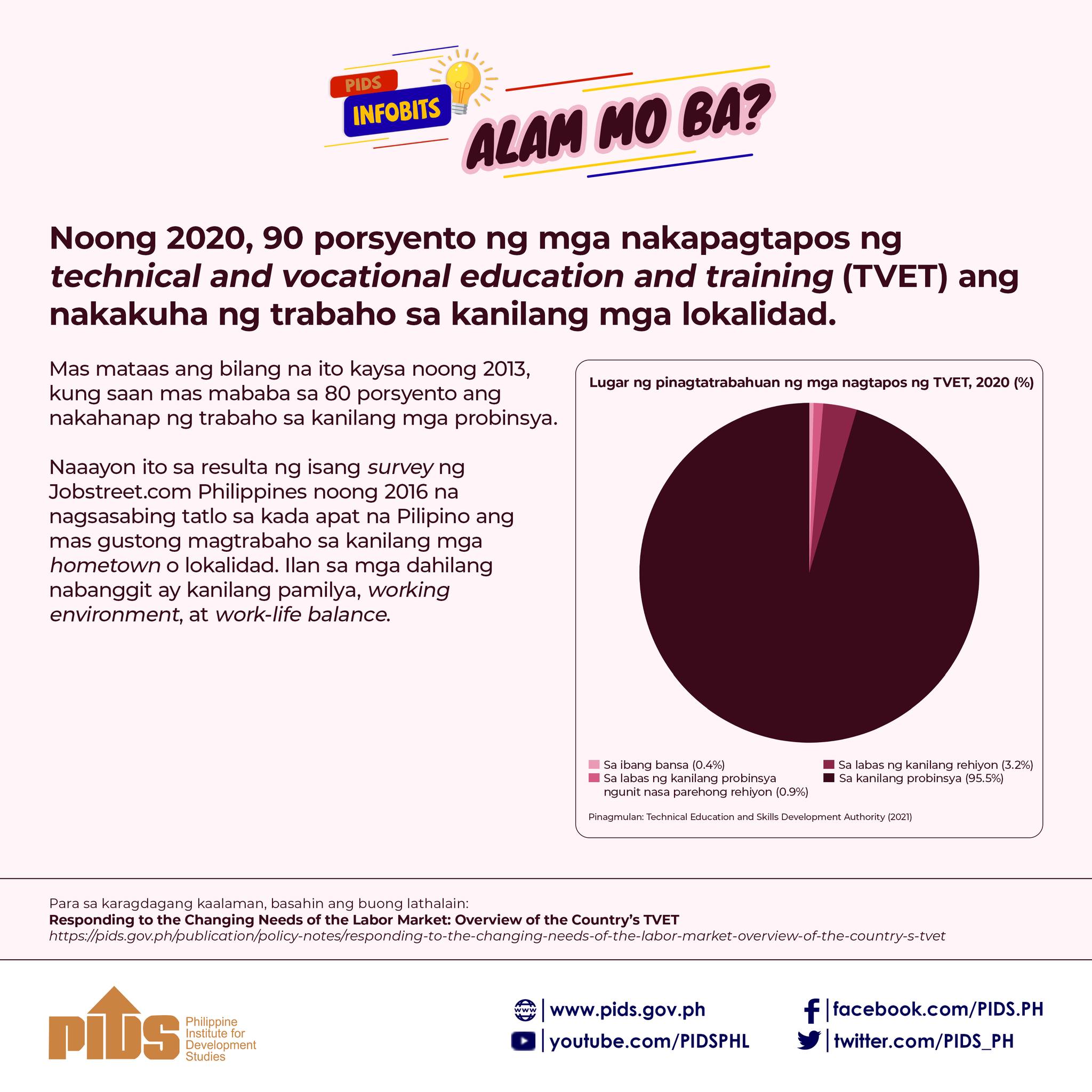Financial constraints and poor Internet connection are among the major factors that bar young Filipinos from going into vocational training, according to the Philippine Institute of Development Studies (PIDS).
In a study titled “Who are the youth NEET (Not in Education, Employment, or Training) in the Philippines today?,” a research team led by PIDS President Aniceto C. Orbeta Jr. found that the absence or lack of tuition and allowance is the major constraint to vocational training.
The study found that 47.5 percent of respondents said they had no funds for tuition or allowance to secure technical and vocational training.
“Allowance support is also the most frequently cited support needed to encourage training participation among youth. Lack of allowance for trainees was highlighted in interviews with training providers as a hindrance to training participation,” the researchers said.
“While Tesda (Technical Education and Skills Authority) already offers a daily allowance in all of its scholarship programs, Tesda may consider re-examining its allowance benefits in light of this information,” they added.
Data showed 35.3 percent of respondents said they had no funds for tuition for a vocational course while 34.2 percent said they did not have funds for allowance.
Some 11 percent of respondents said they had housework or caring duties while 10 percent said they were working or were seeking work, preventing them from pursuing technical and vocational training.
Data showed 8.1 percent said they were doing housework; 5.3 percent said they had caring duties; 5.8 percent said they were working; and 5.2 percent said they are looking for work.
However, the data showed 35.6 percent said they had no hindrance in taking up technical or vocational training, while 12.6 percent said they lacked information about these programs.
“With the survey done during the pandemic and training going into online mode, poor or no internet connection is the most frequently cited challenge among those who are on training. In addition, digital device issues are also highlighted,” the researchers said.
“The same issues were emphasized in interviews with training providers. Shifting to remote learning must consider access issues of the target beneficiaries of TVET,” they added.
Female NEETs
Data showed that more young females in the country dropped out of school into inactivity. The researchers said NEET incidence among females is nearly double than among males.
The study showed that while more males leave school or training earlier than females, a smaller proportion of females leaving school transition to the labor force and employment and a larger proportion transition to inactivity.
The data showed that more than three out of five NEET or 62.6 percent are female. In particular, female NEET aged 20 to 24 comprise the largest NEET subgroup at 46.5 percent followed by male NEET aged 20-24 at 22.9 percent.
The NEET incidence among married females was at 67.4 percent and 44 percent among separated females. The separated females include those whose marriages were divorced or annulled.
“In contrast, the incidence among other subgroups are all below 15 percent, and is lowest among married males (at) 9.2 percent. This suggests that marriage is a major factor to being NEET among female youth,” the researchers said.
The PIDS study found that home carers consist of the large majority of female NEET, but a much smaller proportion of male NEET.
The data showed 56.6 percent of female NEETs are aged 15 to 19 years old while 63.6 percent are between the ages of 20 to 24 years old.
“While they stay longer in school compared to male youth, when they leave school, many of them are economically inactive. Our initial analysis suggests that marriage is a major factor driving female youth inactivity. There is a need to understand better the reasons behind this so it can be effectively addressed,” they said.
PIDS study cites NEET youth’s hindrance to vocational training












